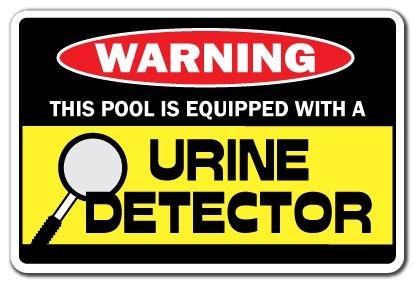Immersion Diuresis

The need and want to pee in the pool is actually physiological. There is even a term for it: immersion diuresis.
Everyone who gets into a pool benefits from the water being as clean as possible. The irritating, “chlorine-like smell” (chloramines) comes from contaminants in the water reacting with the chlorine disinfectant in the water. How can people help to keep the water clean?
- People should take a shower using soap and warm water before entering the pool.
- Everyone should always take a “pee break” before getting into the pool.
- No one should get into the pool if they are, or have recently been suffering with diarrhea.
There has been quite a debate about competition swimmers peeing in the pool during workouts. As pool pros, we all know full well this practice occurs regardless of age, gender and swimming ability.
First of all, why do we need or want to pee while swimming? The need and want to pee in the pool is actually physiological. There is even a term for it: immersion diuresis.
We go in the pool for two reasons: pressure and temperature. When we immerse ourselves in the pool, we become buoyant. When we become buoyant, the blood retreats from the limbs back to the torso. The body interprets this as too much fluid so it signals the kidneys to get rid of any excess fluid we may have. The temperature of the water affects our bodies the same way: the cooler the water, the more the blood retreats from the limbs to the torso.
Why is peeing in the pool a bad thing? Although sterile until it reaches the urethra, urine has high levels of ammonia, organic compounds, crystallized salts and, generally, has a low pH.²
Crystallized salts tend to cloudy up the water while ammonia and organic compounds will build up chloramines. So if enough people pee in the pool, you can end up with a cloudy pool that is low in pH, high in uric acid, chloramines and higher TDS levels.
Obviously, none of this is good for our pools.
Now that we know why we pee in the pool, and why the practice is bad, what can we do to start changing the habits of the patrons of our pools?
We have to recognize that while we may have dozens of programs going on in our pools, we actually have only two kinds of patrons: the pros and everyone else. The pros are the swim team members and lap swimmers. The pros wish to get their workout completed in the shortest time frame possible. Getting out of the pool to use the restroom prolongs the workout and interrupts the “zone” that allows swimmers to autonomously swim for thousands of yards at a time.
Changing the habits of the swim team starts with changing the mindset of the coach. Swim coaches want to keep the workout going and get it completed. Interrupting a workout to let everyone take a break would interfere with most coach’s plans.
Changing the habits of lap swimmers is equally tricky because, like most people, lap swimmers may not take too kindly to the suggestion that they need to be reminded to go to the bathroom.
Most, if not all, aquatics facilities already have a rule on hand that is normally enforced: no one in the pool unless lifeguards are on duty. What if the facility made it a rule that no lifeguards would be on duty from the top of every hour to 10 minutes after?
Closing the pool for 10 minutes every hour works like a dream at day-care centers and many small fitness clubs. But a huge natatorium? A radical idea indeed.
Understandably, this would not go down very well with the pros that normally swim for 2-2.5 hours straight.
For coaches teaching those aged 10 and under, stopping a workout and ordering everyone out of the pool to go potty is pretty straightforward and fairly easy. It starts getting tricky when the swimmers enter the "tween" years. Tweens and teens start saying, "Wait a minute, I am not a young child and shouldn't be ordered to the bathroom like one." I know when I need to go potty and I don't need anyone to tell me that." The idea is not to “order” anyone to the restroom but to close the pool for 10 minutes every hour so there isn’t much else to do but go to the restroom.
Obviously if we want swimmers to use the restroom as opposed to the pool, coaches will need to work with facility managers to maximize their work out time in the most efficient manner possible. A team that normally has a two-hour workout might need to look at expanding to 2.5 hours to accommodate restroom breaks. This would be tough, not just for the coach, but for the swimmers and their families as well. The families of the swimmers would have to adjust their schedules to fit the swimmers. The facility would then need to look to moving around the other programs that also utilize the pool.
To make this happen, strong leadership and cooperation between aquatics directors, coaches and instructors of the various programs is needed.
As for everyone else that uses the pool, this shouldn’t be an issue as most programs last 50 minutes or less anyway.








